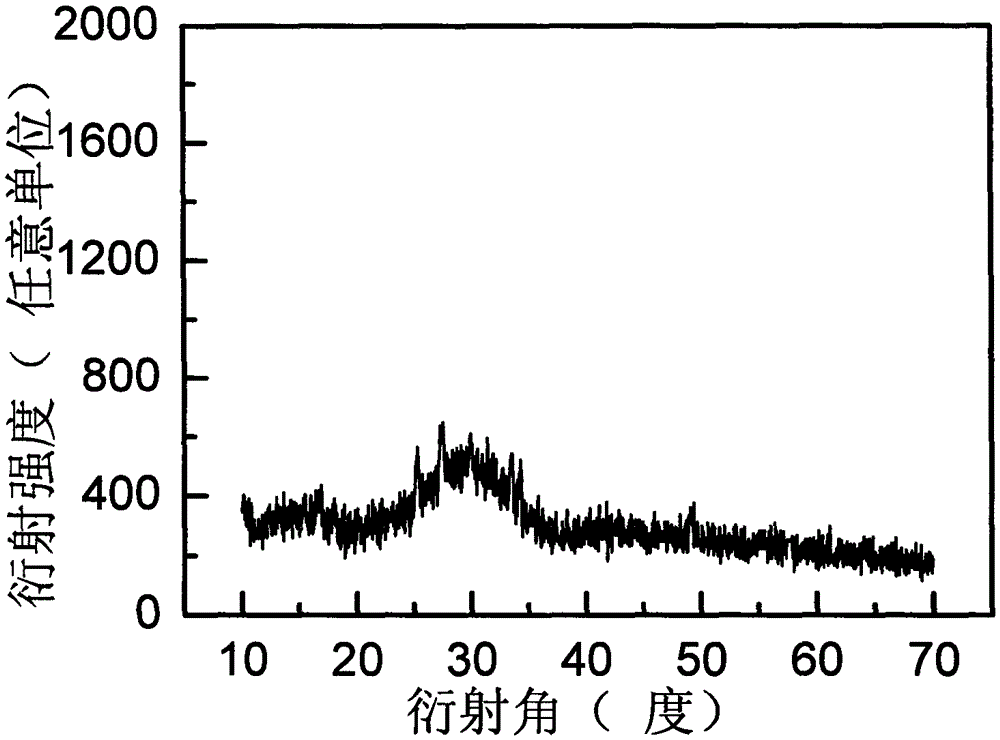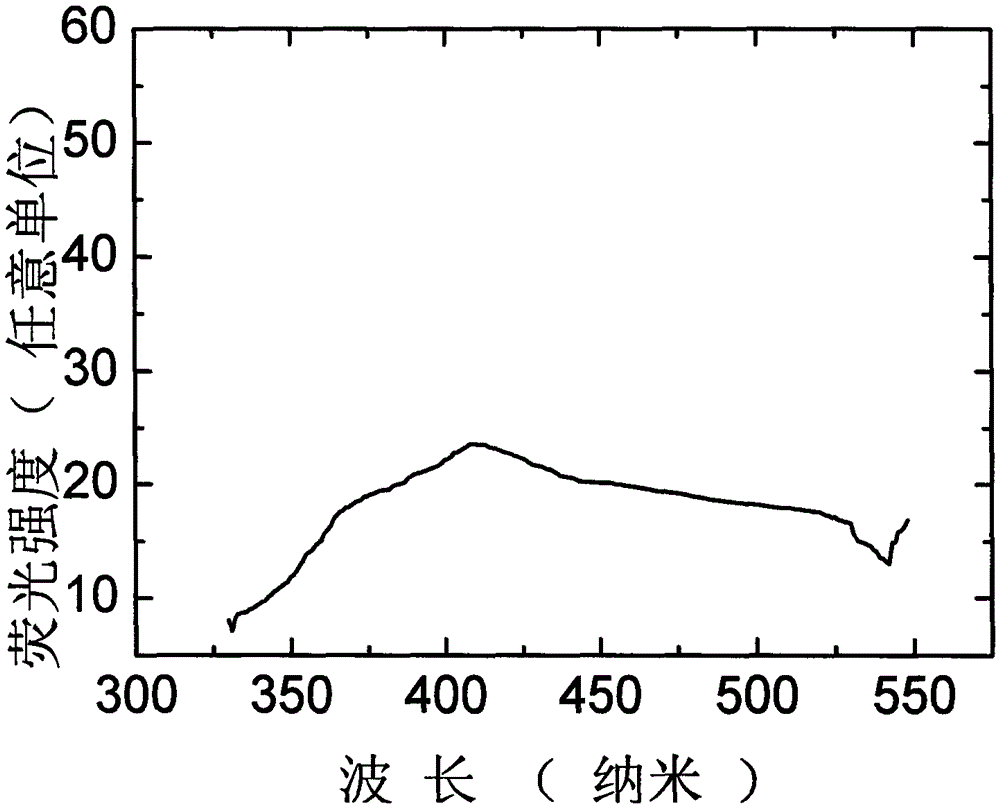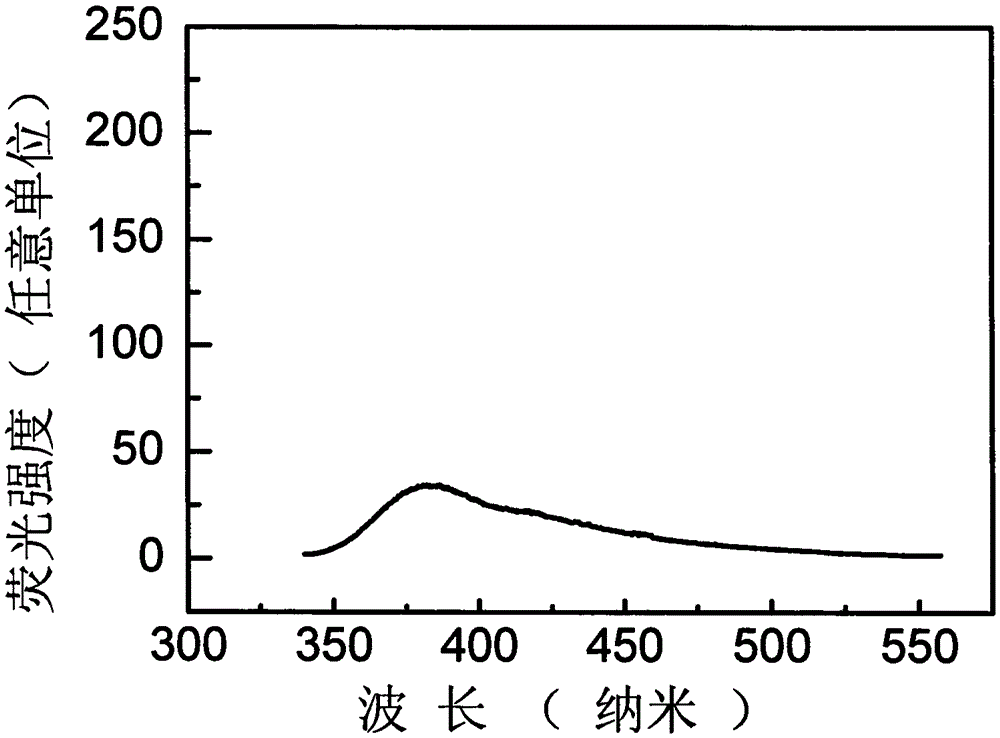Preparation method of glass film containing rare-earth ion doped barium iodide microcrystals
A technology of rare earth ions and glass thin films, which is applied in the field of preparation of glass thin films, can solve problems such as device development limitations, and achieve the effects of overcoming incomplete uniformity, high transmittance, and preventing decomposition and volatilization
- Summary
- Abstract
- Description
- Claims
- Application Information
AI Technical Summary
Problems solved by technology
Method used
Image
Examples
Embodiment 1
[0039] The preparation method of the glass thin film containing rare earth ion doping barium iodide microcrystal, comprises the following steps:
[0040] (1), the preparation raw materials are composed by mole percent: ethyl orthosilicate: 63mol%, aluminum sec-butoxide: 5mol%, tetraethoxygermanium: 12mol%, barium iodide BaI 2 .16mol%, europium iodide: 4mol%, take by weighing a total amount of 20 grams of analytically pure raw materials for each preparation, stand-by;
[0041] (2), hydrolysis of aluminum sec-butoxide: dissolve the aluminum sec-butoxide weighed in step (1) in dehydrated alcohol, the mol ratio of dehydrated alcohol and aluminum sec-butoxide is 3: 1, add glacial acetic acid quickly , the volume ratio of aluminum sec-butoxide to glacial acetic acid is 1:1, and strong magnetic stirring is carried out, distilled water is gradually added dropwise, the molar ratio of distilled water to aluminum sec-butoxide is 0.8:1, and the hydrolysis reaction is carried out at room t...
Embodiment 2
[0052] It is basically the same as Example 1, except that the raw materials are prepared according to the following molar percentages in the step (1): ethyl orthosilicate: 72 mol%, aluminum sec-butoxide: 7 mol%, tetraethoxygermanium: 10 mol%, Barium iodide: 10mol%, cerium iodide: 1mol%, each raw material is weighed respectively; In the step (8), the pulling speed of the glass substrate in the gel solution is controlled at 1 mm / s, and the pulling is repeated 5 times, Each pulling interval is 15 minutes; in step (9), heat up to 100°C at a rate of 50°C per hour, and then heat up the furnace to 340°C at a rate of 50°C per hour; in step (10), The temperature of the furnace was gradually raised to 530° C., and the reaction treatment was carried out at this temperature for 2 hours.
[0053] For the prepared Ce-containing 3+ Ion-doped barium iodide microcrystalline glass film was tested for performance, and the XRD pattern of the glass film after hydrogen iodide treatment was consist...
Embodiment 3
[0055] It is basically the same as Example 1, except that the raw materials are prepared in the following molar percentages in the step (1): ethyl orthosilicate: 70 mol%, aluminum sec-butoxide: 8 mol%, tetraethoxygermanium: 7 mol%, Barium iodide: 13mol%, terbium iodide: 2mol%, each raw material is weighed respectively; In the step (8), the pulling speed of the glass substrate in the gel solution is controlled at 0.6 mm / s, and the pulling is repeated 3 times. Each pulling interval is 15 minutes; in step (9), heat up to 100°C at a rate of 40°C per hour, and then heat up the furnace to 340°C at a rate of 40°C per hour; in step (10), The temperature of the furnace was gradually raised to 520° C., and the reaction treatment was carried out at this temperature for 3 hours.
[0056] For prepared Tb-containing 3+ Ion-doped barium iodide microcrystalline glass film was tested for performance, and the XRD pattern of the glass film after hydrogen iodide treatment was consistent with tha...
PUM
 Login to View More
Login to View More Abstract
Description
Claims
Application Information
 Login to View More
Login to View More - R&D
- Intellectual Property
- Life Sciences
- Materials
- Tech Scout
- Unparalleled Data Quality
- Higher Quality Content
- 60% Fewer Hallucinations
Browse by: Latest US Patents, China's latest patents, Technical Efficacy Thesaurus, Application Domain, Technology Topic, Popular Technical Reports.
© 2025 PatSnap. All rights reserved.Legal|Privacy policy|Modern Slavery Act Transparency Statement|Sitemap|About US| Contact US: help@patsnap.com



